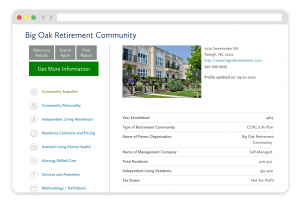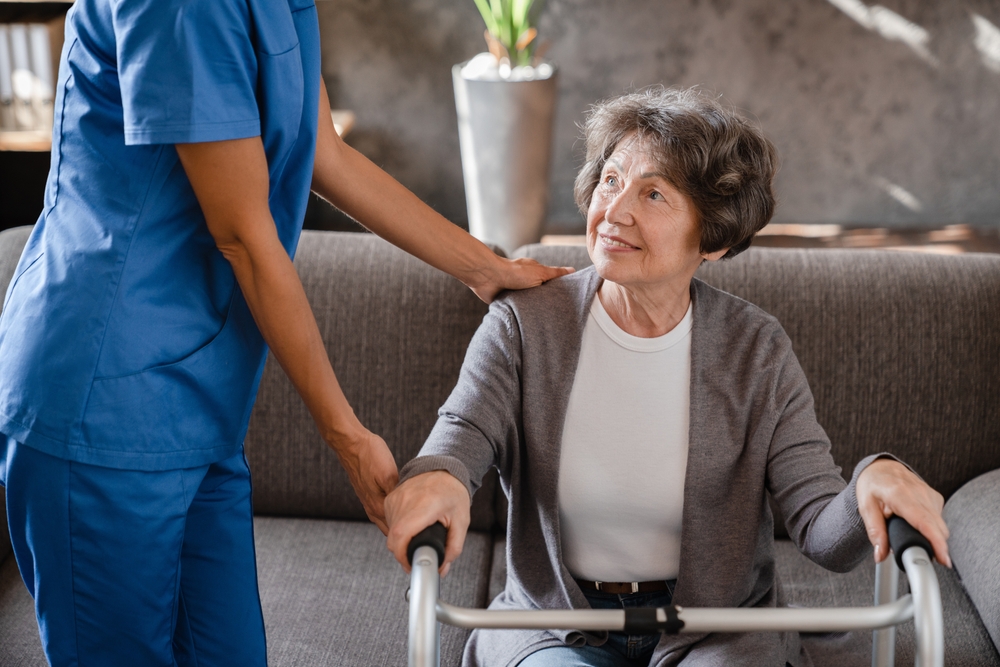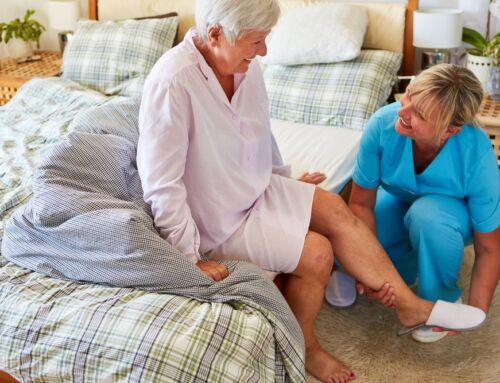Choosing an assisted living community for yourself or a loved one is an important decision that impacts overall health and happiness. While most people will consider the community’s services, amenities, and reputation, there’s another key factor that should be part of the equation: the assisted living community’s safety record.
While most senior living communities in the United States are safe, supportive, and professionally managed, rare but tragic incidents, such as the recent deadly fire at an assisted living facility in Fall River, Massachusetts, highlight why it’s so critical to thoroughly vet an assisted living facility’s safety standards before making a move.
Let’s take a look at what to consider when assessing a potential assisted living community, including safety infrastructure, staffing, and emergency preparedness, as well as how to use federal and state resources to inform your decision.
The Gabriel House assisted living fire
On Sunday, July 13, 2025, a fire broke out at the nonprofit Gabriel House, an assisted living community in Fall River, Massachusetts that opened in 1999 with 100 single-bed residential units. The fire and smoke led to the deaths of at least nine residents and injuries to at least 30 others.
Initial investigations reveal that the fire began on the second floor of the three-story building. Heroic firefighters, police officers, and medics risked their own lives to pull dozens of residents (many of whom had mobility issues that required a walker or wheelchair, or who needed highly flammable oxygen tanks) from the burning, smoky building, saving countless lives.
>> Related: Factoring Climate Change into Senior Living Decisions
What went wrong at Gabriel House?
Though this event was tragic, it remains a rare occurrence in the senior living industry. Still, it serves as a powerful reminder that assisted living safety cannot be assumed; it must be verified. There are a number of issues that may have contributed in part to the tragic events that occurred at Gabriel House.
A record of safety concerns
The Gabriel House facility had a documented history of safety concerns, including problems with its elevator, fire alarm system, and unclear evacuation protocols (not to mention issues reported about sanitation and rodents). First responders also noted that window air conditioning units complicated ladder rescues during the fire.
Furthermore, while the building had some fire protection infrastructure like sprinklers and smoke alarms, questions are being asked about whether it was sufficient. This may be particularly true given the vulnerability of many of the community’s residents.
Insufficient first responder staffing
There are additional concerns about adequate firefighter staffing the night of this catastrophe. According to Massachusetts State Fire Marshal Jon Davine, about 50 firefighters were called to battle the blaze, including about 30 who were off duty at the time.
The National Fire Protection Association (NFPA) regulation 1710, the International Association of Fire Fighters, and FEMA all recommend that fire engine companies be staffed with at least four on-duty firefighters. The Fall River fire companies typically only have three firefighters on duty at a time, however. It’s currently unclear if these low staffing numbers are a result of town budget constraints, recruitment issues, or both.
Facility staffing and preparedness deficiencies
There is also speculation about whether Gabriel House employees were adequate in number the night of the fire. As with many long-term care communities, staffing has long been an issue at Gabriel House. Current and past employees note that it is in part due to the low wages of these often-demanding jobs, which are often barely above minimum wage.
Finally, many question whether staff at Gabriel House were properly prepared to act quickly in emergencies to aid residents- particularly those residents with mobility issues. There have even been reports from residents that at least some of the on-duty staff members fled the fire without trying to help any residents escape.
Most assisted living communities are safe
Again, it’s important to emphasize that catastrophic events like the Gabriel House fire are extremely rare. Furthermore, the vast majority of senior living communities across the country, including assisted living communities, meet or exceed local and federal safety standards. Many even go above and beyond, offering comprehensive wellness programs, 24/7 medical oversight, and advanced emergency preparedness plans to protect their residents.
Still, families and prospective residents have a responsibility to ask the right questions and ensure an assisted living facility is doing everything possible to maintain high levels of safety for those living there.
>> Related: How Do I Know If a Retirement Community Is Safe?
Key areas to assess when vetting safety of assisted living communities
If you or a loved one is considering a move to an assisted living community, it is wise to tour several facilities in person. There is a lot you can tell just by your observations. Pay close attention to cleanliness, accessibility, resident demeanor, and staff interactions.
But don’t be shy; you should ask detailed questions about safety protocols as well. Inquire about fire systems, emergency plans, fall prevention measures, and evacuation procedures. It can also be helpful to talk to current residents/their families about their firsthand experiences, which can reveal a lot about how the facility handles emergency preparedness, resident safety concerns, and actual emergencies.
Here are some other things you can look for and ask in order to assess the overall safety of an assisted living community.
Fire and emergency preparedness
- Ask whether the building is fully equipped with fire alarms, smoke detectors, and sprinkler systems in both common areas and residents’ units.
- Ensure that exits are clearly marked and that evacuation routes are easily accessible for people with mobility issues.
- Request to see the facility’s emergency action plan, and ask how often fire drills are conducted and how staff are trained to respond. You can also ask when the last fire marshal inspection occurred and whether any deficiencies were found.
Community staffing levels
- Adequate staff is essential not only for residents’ daily care but also for emergency situations. Facilities should maintain proper staff-to-resident ratios, particularly during overnight and weekend hours.
- Inquire about the training staff receive in areas such as CPR, first aid, medication administration, and emergency evacuation.
- It’s also helpful to ask about staff turnover since frequent turnover may indicate larger issues that could compromise resident safety and care continuity.
Resident safety policies
- Beyond fire prevention, you’ll want to understand how the facility handles fall prevention, mobility assistance, medication management, and secure entry and exit. These day-to-day safety measures are just as important as large-scale emergency plans.
- Ask whether there is overnight security, and how visitors are monitored.
- For memory care units, inquire about how they prevent resident wandering.
Facility licensing, inspection records, and complaint history
- Each state has its own agency responsible for licensing and inspecting assisted living facilities, often through the department of health or aging services. These records are typically available online and can show whether a facility has had recent violations, unresolved complaints, or patterns of concern.
- Every U.S. state also has a long-term care ombudsman office that advocates for residents of assisted living and other long-term care communities. These offices can provide information about a facility’s reputation, history of complaints, and any regulatory issues. To find your state’s ombudsman, visit the National Consumer Voice for Quality Long-Term Care. The National Center for Assisted Living is another helpful resource for information.
- Don’t hesitate to ask the assisted living community to provide their most recent inspection report or direct you to where it can be accessed online. A high-quality community should be proud to share such records.
>> Related: Evaluating Care, Quality, and Access at a CCRC’s Healthcare Center
Be thorough, not fearful
The fire at Gabriel House was a heartbreaking reminder of what can happen when assisted living safety protocols fail or are not properly enforced. However, it’s important to balance caution with perspective. The vast majority of assisted living communities in the U.S. are safe, compassionate, and deeply committed to the well-being of their residents.
By taking the time to thoroughly vet potential assisted living communities, ask the right questions, and leverage trusted resources (such as state inspection reports and your long-term care ombudsman), you can feel confident that you’re making a safe and informed choice for yourself or your loved one.

FREE Detailed Profile Reports on CCRCs/Life Plan Communities
Search Communities






